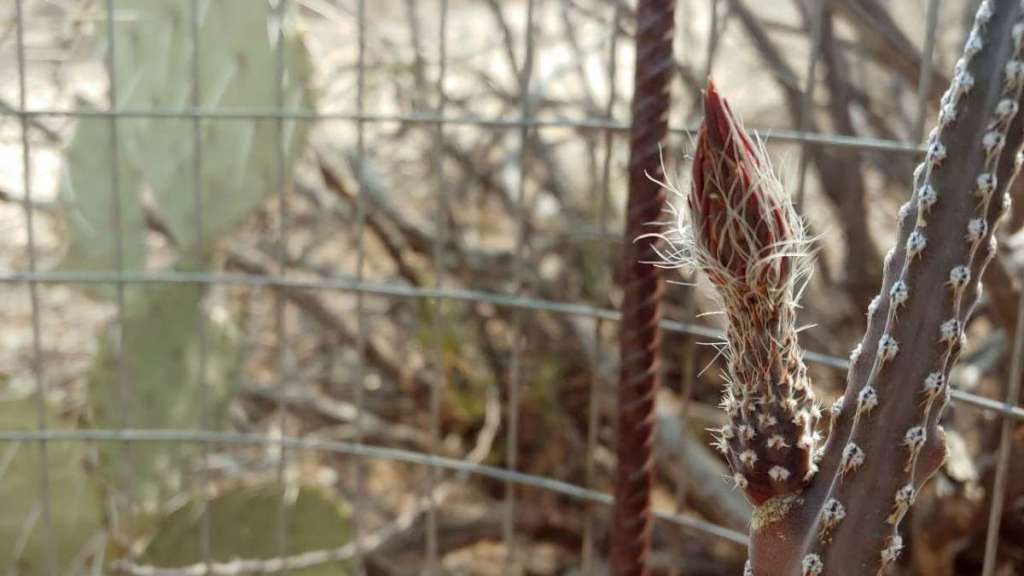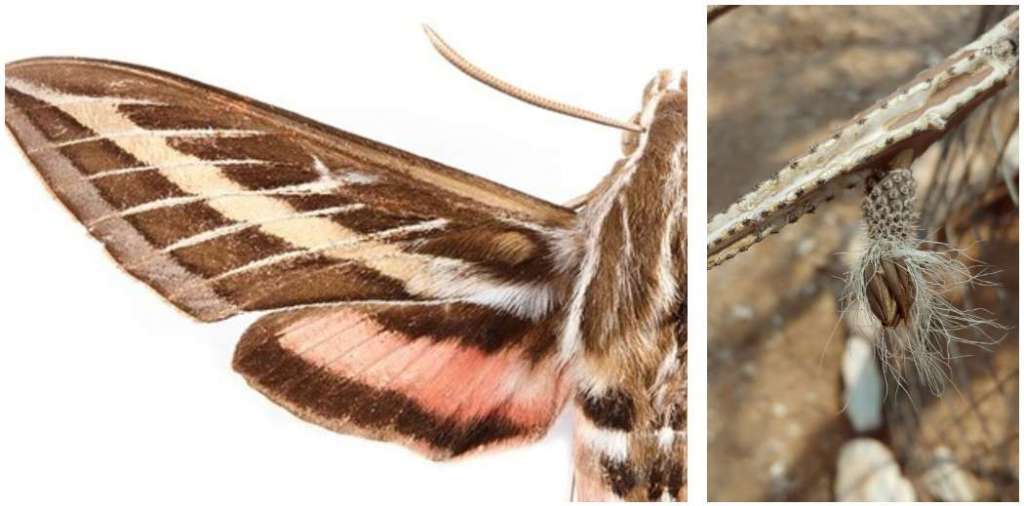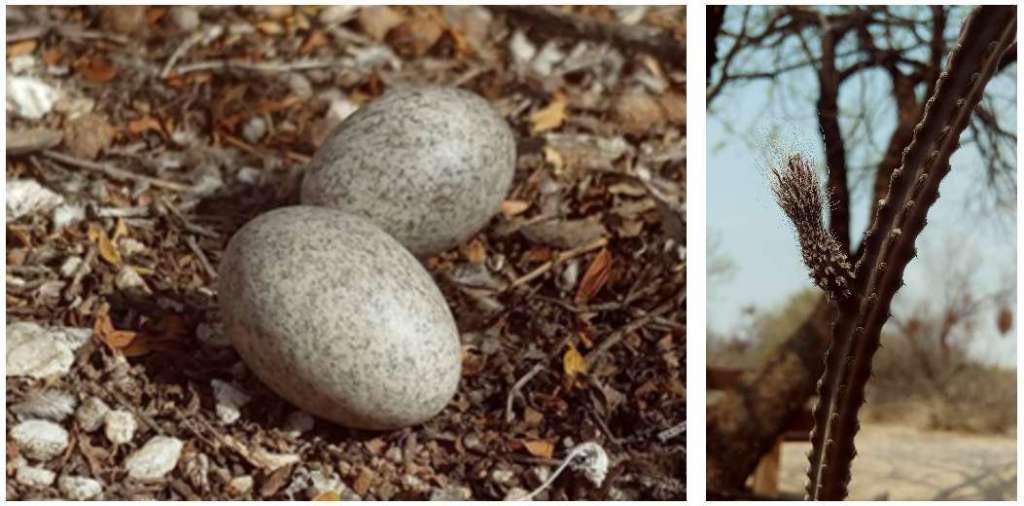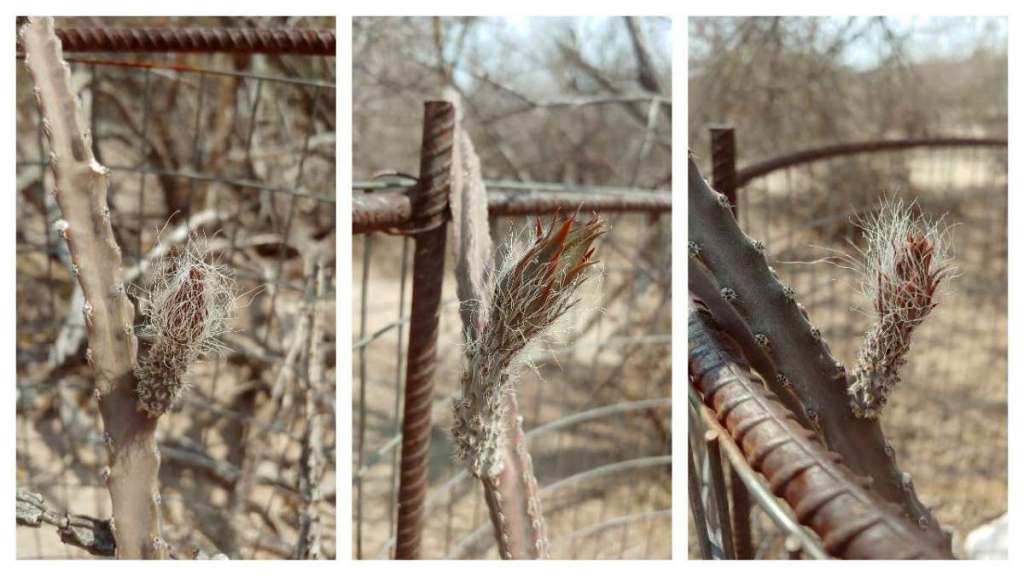
Bloom Watch #3 – The Queen’s Subjects
June 16, 2021It’s feeling halfway through dry summer. The triangle-leaf bursage covering the ground is crispy and dormant. The light greens and tans of the foliage and earth contrast with the terracotta of the meditation stones. On the North Loop Trail, the doves perch atop saguaros covered in large clusters of green fruits, brilliant red of ripeness here and there. A nighthawk guards her precious eggs, large smooth pebbles, in the shadow of a creosote bush. The occasional trill and electric buzz of cicada calls hover in the air. The Queen is waiting. No signs of blooming yet, the buds still stalled. This week some of the smaller ones are dropping off. Just saving her energy as a heatwave starts.
There are many inhabitants that call the patch of desert of the North Loop their home. Coyotes, bobcats, and javelinas wander through and creatures big and small dig burrows to take refuge from the midday sun. All the while, plants are interacting silently, releasing messenger chemicals into the air and out the tips of their roots.
If only we knew what they were saying.
A noteworthy loyal subject of The Queen, the hawk moth is essential to the continuation of the royal line as one of the main pollinators. Why are these winged creatures so important? Unlike many cacti, Peniocereus greggii only reproduces from seed. A level of efficiency is required of the hawk moth, as The Queen is a synchronous bloomer. Beginning at dusk, the hummingbird-sized moths must visit all the flowers they can before the blooms fade mid-morning. Individual plants are self-incompatible and rely on cross-pollination. This means that each individual needs pollen from a different individual to produce seed. To ensure this, nectar is tucked away deep within the whorl of petals, requiring the hawk moth to land, and come into contact with the pollen-covered anthers.

How does the hawk moth find them in the dim light? They are attracted to the petals which are highly reflective of all the visible wavelengths of light, casting them bright white. Interestingly, they lack ultraviolet reflectance and contrast that is common in plants that rely heavily on bees (though bees enjoy finding the leftovers in early morning). As the blossoms unfurl they produce a sweet perfume likened to honey or cotton candy. The scent is made up of benzenoid compounds that the moths detect with their large, fuzzy antennae. As large, robust insects they are reliable pollinators, able to travel significant distances between plants. The moths have their work cut out for them. The Queen rewards them with a sucrose-rich, high caloric meal; a single blossom supporting 3 to 20 minutes of flight.
Theirs is a delicate symbiosis that has been shaped by the Sonoran Desert over time. Yet, the hawk moth is just one of the many strands woven together to form the tapestry of the Queen’s Court.
– Tracey Till
Propagation & Greenhouse Associate




